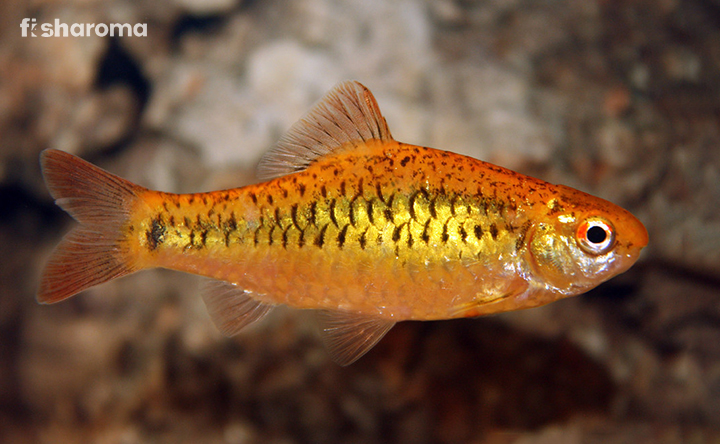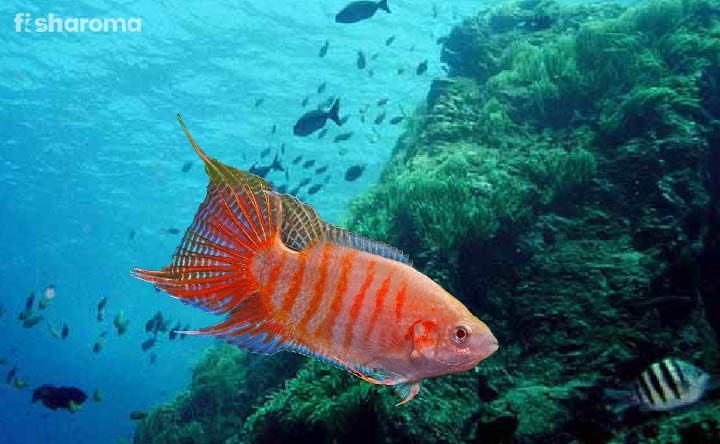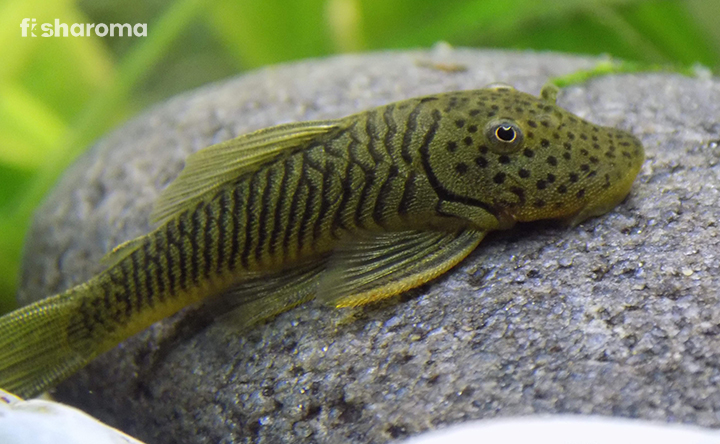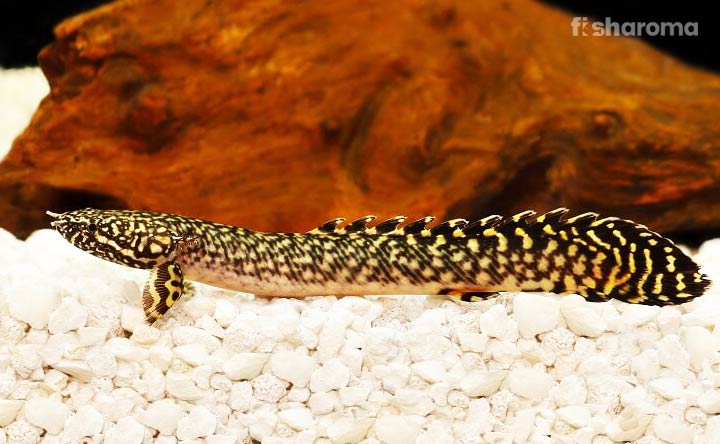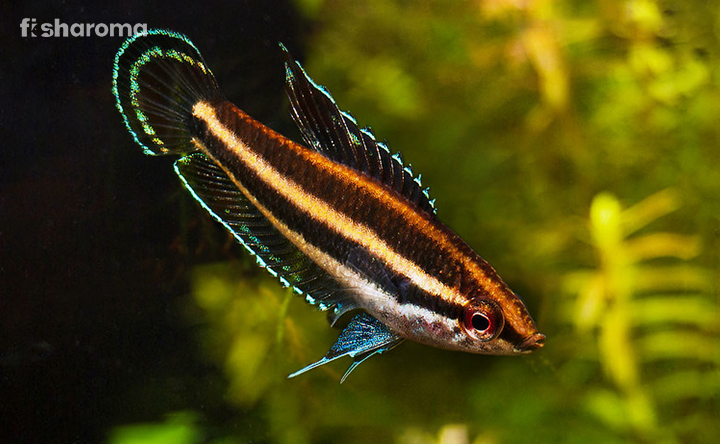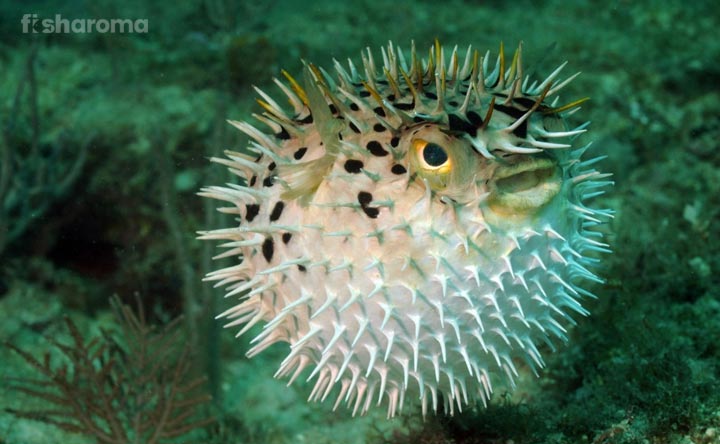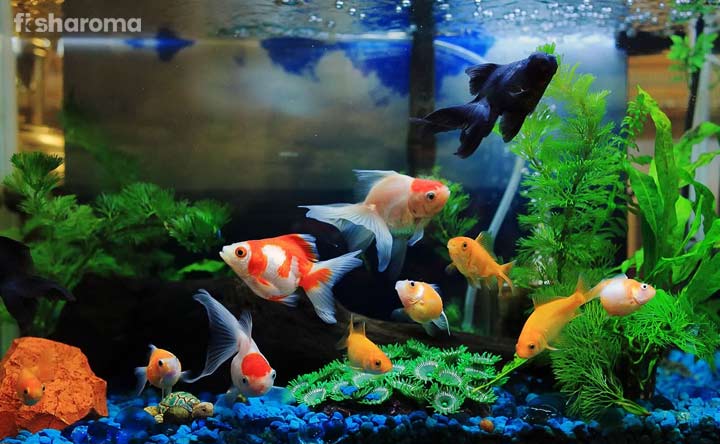How to Breed Betta Fish – A Detailed Breeding Guide with Facts & Data
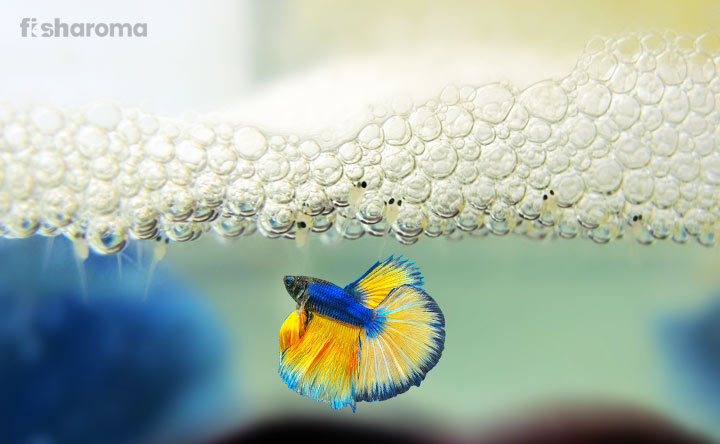
- Getting to Know Bettas Up & Close
- Setting up the Main Tank for Your Betta
- Setting up a Betta Fish Breeding Tank
- Selecting the Right Betta to Breed
- Conditioning the Bettas for Breeding
- Introducing the Female & Male Bettas to the Breeding Tank
- Removing the Divider between the Male & Female Betta
- The Mating Dance
- Guarding the Nest
- The Hatching
- After Care
- Summary
Betta fish, also known as Siamese Fighting Fish, are one of the most sought-after freshwater aquarium fish around the world. Their intense aggression and magnanimous fins make them highly intriguing to watch. It won’t be an overestimation if we say that they are one of the most popular ornamental fish. So, naturally, questions about breeding them in captivity are often asked by fishkeepers; and this is precisely our topic of discussion here. Here’s presenting before you everything you wanted to know regarding how to breed Betta fish.
Before we get to know about the breeding process of Bettas, it is essential to have a basic knowledge about their lives and how to set up the main tank for them. So, let’s do that.
How to Breed Betta Fish – An Overview
Members of the Osphronemidae family, Betta fish or Betta splendens as they are scientifically called, derive their name from the word ‘Bettah’, which means ‘an ancient clan of warriors’. As their name suggests, they are highly ferocious and are notorious for their skills in combat. They are also very territorial and threaten anyone that invades their space.
There are stark differences between the Bettas found in the wild and the ones that are raised in captivity. In the wild, they mainly sport dull shades of brown, grey, or green color, whereas, in captivity, there isn’t a color that you won’t see in them. The difference extends to the shape of their fins as well. The Bettas that we see in aquariums have intricate designs in their tails, that seem straight out of the book of an artist – Crowntail, Rosetail, Feathertail, Half-Sun, you name it, they have it.
Unfortunately, these gorgeous species have a short lifespan, living just 2-4 years. Coming to their diet, they are a carnivorous species, feeding mainly on insects. Ideal food choices for them are Daphnia, Plankton, Brine Shrimp, Glassworm, and Tubifex, among others.
Getting to Know Bettas Up & Close
The aggressive nature of Betta Fish makes them low in the compatibility spectrum. Two male Bettas shouldn’t be kept together in a single tank; however, two female Bettas can co-exist comparatively in a better way. A male and a female can be kept together only during breeding.
When it comes to choosing their tankmates, go for peaceful, non-confrontational bottom-dwellers since Bettas spend most of their time at the top level of the water column. Thus, Cory Catfish, Guppies, Red Cherry Shrimps, Ghost Shrimps, Neon Tetras, and African Dwarf Frogs are great options for them. On the other hand, avoid keeping them with aggressive species such as Red Finned Shark, Rainbow Shark, Tiger barbs, or any types of Cichlids.
Domestically-petted Bettas are also vulnerable to various diseases. Prominent among them is fin rots, which usually results from water contamination. Other than this, constipation due to over-feeding also is frequently seen in them.
Setting up the Main Tank for Your Betta
The tank that you host your Betta in must replicate its natural habitat so that it feels living in a familiar environment, which would, in turn, make it healthier.
First of all, try to give your Betta adequate space. If you are keeping it alone, you may use a 5-gallon tank. However, when keeping it with others (especially if you are keeping it with other Bettas), make sure they have adequate space. Next, provide a 12-hour lighting system for them and use a firm tank lid as Bettas are known for making leaps off the water surface.
Use a mild filter that will generate low currents and keep the tank aerated and clean. You should also include caves, and rocks that will serve as hiding spots for these fish. Just ensure that there aren’t any sharp-edged ornaments since that may cause damage to the delicate fins of your Betta.
The temperature of the water should be maintained between 74-80° F (23-27° C), while the pH level of the tank water should be at 6.8-7.4. Besides, the level of ammonia and nitrite should be 0 (zero), and the level of nitrate should be less than 20 ppm. The general hardness should be 7-9 dGH, and the carbonate hardness must be 5-8 dKH. Also, 25% of the water should be replaced every 15 days.
Setting up the Breeding Tank for Your Betta
The first step in our ‘How do Breed Betta Fish’ guide involves setting up at the breeding tank. Bettas become extremely volatile during breeding. This is why you need a separate breeding tank where the mating of your Bettas, along with the raising of the fries, can take place.
You need to ensure that your breeding tank is located in a quiet place where your Bettas won’t be disturbed by any unnecessary noises. It should be a rather shallow tank that has 3-5” (7.5-12.5 cm) of water. Place a heater and set the temperature at 78° F (25° C).
Many people refrain from using a filter since the water flow generated by them can disturb the bubble nest of Betta. If you want to use one, don’t go for a strong filter. Also, don’t use any gravels as substrate. Keep the bottom of the tank bare. Provide a couple of hiding spots in the form of caves and stones. You can also add live plants such as Java Fern since they are a perfect place for small organisms to grow, which your Betta fries can eat.
Furthermore, include a floating surface such as an almond leaf or Styrofoam on which the bubble nest can be made. Use dim light since Bettas would shy away from spawning in a brightly-lit place.
Both the main and breeding tank must be cycled 4-6 weeks in advance so that a proper ecological balance is maintained inside.
Selecting the Right Betta to Breed
The pair that you breed must be healthy, with no signs of any infection or disease, and must be active swimmers. Make sure that they aren’t lying on the aquarium floor or are lazy by nature. Avoid breeding the specimens whose eyes are bulging. Also, note for any wear-and-tear in their fins and scales.
The peak breeding age for Bettas is 4-12 months. So, ensure the specimen that you are picking is of that age. Both the male and female should be more or less of the same size; in fact, the females should be slightly smaller than the males.
Conditioning the Bettas for Breeding
Next step in our ‘How do Breed Betta Fish’ guide is the conditioning part. In a captive environment, the breeding conditions have to be optimal since it is you who is selecting the breeding pair. This is different from what happens in the wild. Female Betta in the wild selects their male partner based on their colors, size, fin length, and their ability to build a bubble nest.
Conditioning your Betta for breeding involves making them strong enough so that they can withstand the breeding process. You should feed the females a high-protein diet from two weeks before breeding so that they can produce more eggs, and the males have the stamina to care and protect the eggs.
Ideally, feed them small quantities of food 2-4 times every day. Live foods are generally recommended in this stage. This can include Daphnia, Bloodworms, Tubifex, small insects (Roaches and Crickets), larvae of insects, chopped meat, etc. In the absence of these live foods, go for their frozen counterparts.
Introducing the Female & Male Bettas to the Breeding Tank
Now, we come to the main breeding part. Install a transparent divider at the center of your breeding tank and release the female slowly and steadily at one side of the tank. Let her sit for half an hour before putting the male on the other side of the divider.
You will notice the male intensifying his colors and flaring his fins to grab the attention of the female. If the female is reciprocating his response, then you will see her intensifying her colors as well. There will be vertical stripes across her body that are known as barring pattern. In addition, her ovipositor will also start protruding. In some instances, you can also see her wagging her body back at him.
Within 24 hours, you will see the male building a bubble nest on the Styrofoam or almond leaf you put in the tank. He makes this nest through air bubbles and coats them with his saliva to make it durable.
Removing the Divider between the Male & Female Betta
After the bubble nest is made, you can remove the transparent divider between the male and female Betta. This can be around a day after they were introduced to the breeding tank.
Generally, the females straight up head to the bubble nest to inspect it. If it’s not up to her mark, she will walk away from it or even destroy it. If such a case occurs, remove the female from the breeding tank and start the breeding process again.
If the female Betta destroys the nest for the second time, look for a different pair to breed.
If the female is impressed and stays back, then the male will chase her. Mild chasing and biting are natural, but if things get out of hand, remove the female from the tank. Thus, keep a close watch on them.
The Mating Dance
Next in our ‘How do Breed Betta Fish’ process, there will be a dance ritual wherein they swim next to each other. Since the male can nip the fins of the females if she is not responding to him, having hiding spots for them is very important in the breeding tank. The whole dancing will continue up until the female is ready to spawn.
Wondering how you would understand when the female is ready to spawn? Well, it varies from individual to individual. Some showcase submissiveness and swim up to the male with their fins by their side and heads down, while others head charge at the nest.
During mating, the male wraps himself around the female and fertilizes the eggs released by her. Some eggs will sink to the bottom of the tank floor, while others will float to the water surface. This process is repeated a couple of times, and it can be taxing for the female. So, if you see the male being very aggressive, safeguard the female by removing her from the tank.
The number of eggs released per spawning session varies from anywhere between 30-40 to even 500.
Guarding the Nest
The male picks up the eggs from the bottom of the tank and keeps them in the bubble nest. Although some females may assist the males in this process, some eat up the eggs. This is why removing the female parent from the tank is recommended at this stage.
In addition, the male may attack the female simply because he sees her as a threat to the eggs.
The Hatching
Hatching of the eggs is the culminating stage in the ‘How do Breed Betta Fish’ process.
After removing the female from the breeding tank, cover the tank with a plastic wrap to retain moisture and heat inside. It will help in creating a humid environment and will assist in hatching the eggs and developing the fries.
For the next 24-48 hours, the male will continue protecting the eggs, especially if you are not using a breeding tank, so that other fish don’t attack the nest. He will keep on catching any eggs that fall off from the nest and put it back again in the nest. At times, you will also see him blowing bubbles or building new nests and moving the eggs there.
He might eat the eggs that haven’t been appropriately fertilized. This is truer if your fish is breeding for the first time.
Soon after, the eggs will hatch, and you can see the tiny fries. They will stay inside the bubbles for around three days. During this time, they use up all the oxygen in the bubbles, which results in the nest collapsing.
If the fries fall off from the bubble nest before this time period, the male parent will put them back to the nest. The fries stay in the bubbles with their tails hanging down. On the fourth day, they are able to swim horizontally.
Once you see them swimming on their own, you need to remove the male parent from the breeding tank. Some aquarists prefer transferring the fries instead to a fry tank, but, in all honesty, that is more hectic and almost unnecessary.
After Care
Let see what the after care portion in our ‘How do Breed Betta Fish’ guide is all about.
You need to feed the fries a proper protein-based food in the form of baby Brine Shrimp, Vinegar Eels, Infusoria, and microworms.
You need to raise them for four months in the breeding tank, after which they mature into adulthood. You can then transfer them to the main tank. However, keep a close watch and see if they are getting attacked by other fish.
Summary
Betta fish are one of the easiest fish to breed when compared to most of the other freshwater fish. It is even suited for beginner fishkeepers, and for experienced aquarists, breeding Bettas helps them in creating the perfect breed with the desired colors and fin shape.
As long as you ensure the right conditions are maintained, Bettas won’t give you any trouble while breeding. This means that just because they are easy to breed, you can’t take them for granted. You need to follow through the ‘How do Breed Betta Fish’ guidelines to ensure their health and safety, especially the female Betta parent and the fries.
Similar Fishkeeping Articles That Might Interest You
Interested in learning more about Betta fish or fish breeding in general? Scroll through the following articles.
- How do Fish Mate?– Understand the basics of the mating rituals of fish and what the overall breeding process entails.
- Best Betta Fish Tanks– Take a tour of the various Betta fish tanks available in the market to find out which tank is best suited for your Betta fish
- Types of Betta Fish– Get to know 31 different variants of Betta fish and pick which one you want to bring home.


